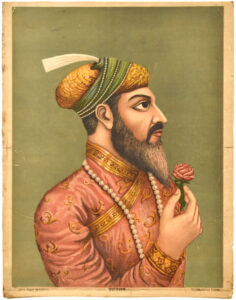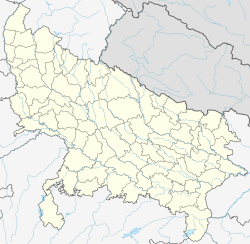Exploring the Majestic Marvel: Taj Mahal – A Testament to Love and Architectural Mastery [2024]

The Taj Mahal, a UNESCO World Heritage Site, is not merely a structure of marble and stone; it is a symphony of love, an architectural masterpiece, and a testament to the grandeur of the Mughal era. Here we will see the Frequently Asked Questions and its answers about the Taj Mahal located in India.
1. What is the Taj Mahal?
The Taj Mahal is an iconic mausoleum located in Agra, India. It is renowned worldwide for its breathtaking beauty and architectural magnificence. Commissioned by the Mughal emperor Shah Jahan in memory of his beloved wife Mumtaz Mahal, it stands as a symbol of eternal love and is considered one of the most exquisite examples of Mughal architecture.

2. When was the Taj Mahal built?
Construction of the Taj Mahal began in 1632 and was completed in 1653. It took approximately 21 years and employed thousands of artisans and craftsmen from across the Mughal Empire, as well as from Persia, Europe, and Central Asia.
3. Who built the Taj Mahal?
The Taj Mahal was commissioned by the Mughal emperor Shah Jahan, who reigned from 1628 to 1658. He ordered its construction as a mausoleum for his favorite wife, Mumtaz Mahal, who died during childbirth in 1631.

4. Why was the Taj Mahal built?
Shah Jahan built the Taj Mahal as a tribute to his beloved wife, Mumtaz Mahal, whom he deeply adored. Mumtaz Mahal was Shah Jahan’s third wife and his trusted companion. Her untimely death at the age of 39 devastated the emperor, and he vowed to erect an unparalleled monument in her memory.
5. Where is the Taj Mahal located?
The Taj Mahal is located in the city of Agra, in the northern Indian state of Uttar Pradesh. It stands on the southern bank of the Yamuna River, overlooking the city.

6. What is the architectural style of the Taj Mahal?
The Taj Mahal is primarily built in the Mughal architectural style, which is a blend of Persian, Islamic, and Indian architectural elements. It features intricate marble carvings, delicate inlay work, and symmetrical gardens, reflecting the grandeur and opulence of the Mughal Empire.
7. What materials were used to construct the Taj Mahal?
The main building material used in the construction of the Taj Mahal is white marble, which was quarried from the nearby town of Makrana. In addition to marble, precious and semi-precious stones such as jasper, jade, turquoise, lapis lazuli, and diamonds were used for decorative purposes.
8. How tall is the Taj Mahal?
The main dome of the Taj Mahal reaches a height of approximately 73 meters (240 feet) from the base of the monument. The entire structure, including the minarets, stands at a height of around 73 meters (240 feet) above ground level.
9. What are the main features of the Taj Mahal?
The Taj Mahal consists of several notable features, including the main mausoleum, four minarets, a mosque, and a guesthouse. The main mausoleum houses the cenotaphs of Shah Jahan and Mumtaz Mahal, while their actual graves lie in a chamber below. The four minarets surrounding the main mausoleum are tilted slightly outward to prevent them from collapsing onto the tomb in the event of an earthquake.
10. Is the Taj Mahal a UNESCO World Heritage Site?
Yes, the Taj Mahal was designated as a UNESCO World Heritage Site in 1983 in recognition of its cultural significance and outstanding universal value. It attracts millions of visitors from around the world each year and is considered one of the most iconic landmarks on the planet.
11. What is the significance of the Taj Mahal?
The Taj Mahal holds immense significance as a symbol of love, devotion, and architectural brilliance. It is not only a testament to the enduring love between Shah Jahan and Mumtaz Mahal but also a masterpiece of Mughal architecture that showcases the cultural synthesis of the Indian subcontinent.
12. How has the Taj Mahal influenced art and architecture?
The Taj Mahal has had a profound influence on art and architecture both in India and around the world. Its symmetrical layout, intricate carvings, and use of white marble have inspired countless imitations and adaptations in various architectural styles, particularly in mausoleum construction.
13. What are some interesting facts about the Taj Mahal?
- The Taj Mahal changes color depending on the time of day, appearing pinkish in the morning, milky white in the evening, and golden under the moonlight.
- It is said that Shah Jahan intended to build a black marble mausoleum for himself across the Yamuna River, but his plans were thwarted by his son Aurangzeb, who imprisoned him in Agra Fort.
- The Taj Mahal complex is designed to be perfectly symmetrical, with identical structures, gardens, and water features on either side of the main mausoleum.
14. How can I visit the Taj Mahal?
The Taj Mahal is open to visitors every day except Fridays. It is recommended to arrive early in the morning to avoid crowds and to witness the monument’s changing colors at sunrise. Visitors can purchase tickets at the entrance gate or online in advance to skip the queue.
15. What are some nearby attractions to visit along with the Taj Mahal?
Agra is home to several other historical monuments and landmarks that are worth visiting alongside the Taj Mahal. These include the Agra Fort, Fatehpur Sikri, Itimad-ud-Daulah’s Tomb, and the Mehtab Bagh, which offers a stunning view of the Taj Mahal from across the Yamuna River.

Conclusion
The Taj Mahal stands as a timeless tribute to love, artistry, and human ingenuity. Its unparalleled beauty continues to captivate and inspire people from all walks of life, making it one of the most cherished treasures of the world. Visiting the Taj Mahal is not just a journey to a magnificent monument but an experience that leaves an indelible mark on the soul.
Read more:






